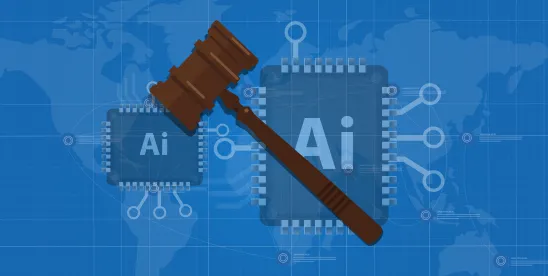The American Bar Association’s Formal Opinion 517 provides guidance on when attorneys’ use of peremptory challenges may violate Model Rule of Professional Conduct 8.4(g), which prohibits harassment or discrimination based on protected characteristics in conduct related to the practice of law. As jury selection becomes increasingly sophisticated – with the rise of jury consultants, artificial intelligence tools, and complex trial strategies – attorneys must navigate a balance between zealous advocacy and ethical obligations.
The opinion focuses on how trial attorneys conduct voir dire, exercise peremptory challenges, and interact with clients, consultants, and technology in the jury selection process. It provides guidance on scenarios involving client directives, consultant recommendations, and AI-assisted jury selection, while clarifying the relationship between constitutional law and professional conduct rules.
I. The Legal Landscape: Batson and Beyond
The foundation for understanding Opinion 517 lies in the Supreme Court’s decision in Batson v. Kentucky, 476 U.S. 79 (1986), and its progeny. These cases established that attorneys cannot exercise peremptory challenges based on race, gender, or other specified characteristics because doing so violates prospective jurors’ equal protection rights under the Fourteenth Amendment. Subsequent decisions extended these protections, and some state laws have expanded beyond federal constitutional requirements to include additional protected categories such as religion and sexual orientation.
Model Rule 8.4(g), adopted more recently, prohibits lawyers from engaging in conduct they know or reasonably should know constitutes harassment or discrimination based on race, sex, religion, national origin, ethnicity, disability, age, sexual orientation, gender identity, marital status or socioeconomic status “in conduct related to the practice of law.” The rule includes an exception for “legitimate advice or advocacy consistent with these Rules.” This exception created ambiguity about how Rule 8.4(g) applies to jury selection, particularly given the statement in Comment 5 that “a trial judge’s finding that peremptory challenges were exercised on a discriminatory basis does not alone establish a violation of paragraph (g).”
II. The Opinion’s Core Principles
Opinion 517 seeks to resolve this ambiguity by establishing two fundamental principles to govern attorney conduct in jury selection.
First, unlawful discriminatory peremptory challenges are not “legitimate advocacy” under Rule 8.4(g). The opinion makes clear that conduct declared illegal by courts or legislatures cannot constitute legitimate advocacy. When an attorney violates Batson, they engage in unlawful discrimination that, by definition, cannot be deemed legitimate conduct. This principle is straightforward but profound: attorneys cannot hide behind the “legitimate advocacy” exception when their conduct violates substantive law governing jury selection.
Second, Rule 8.4(g) does not prohibit discriminatory but lawful exercises of peremptory challenges. While Rule 8.4(g) extends beyond unlawful discrimination in many contexts, the opinion concludes that in jury selection, the rule should not impose restrictions beyond those recognized in existing law. This interpretation aims to preserve the traditional scope of peremptory challenges while ensuring attorneys cannot engage in unlawful discrimination.
The opinion emphasizes that these rules apply only when attorneys “know or reasonably should know” that their conduct constitutes unlawful discrimination. This knowledge standard, defined in the Model Rules, requires either actual knowledge or knowledge that “a lawyer of reasonable prudence and competence would ascertain.”
III. Navigating Complex Scenarios
Opinion 517’s most valuable contribution lies in its analysis of ethically complex scenarios that practicing attorneys may face.
A. Client Directives and Consultant Recommendations
When clients explicitly direct attorneys to exclude jurors based on race or gender, the analysis is straightforward: attorneys must refuse such directives. The Model Rules require lawyers to decline unlawful client instructions, and the fact that discrimination is client-directed doesn’t legitimize otherwise unlawful conduct.
The more challenging scenario arises when clients or jury consultants offer seemingly neutral reasons for challenges that appear discriminatory. Here, the “reasonably should know” standard imposes a duty of inquiry. Attorneys must investigate whether offered reasons are genuine or pretextual. If a reasonably competent lawyer would recognize that the reasons are pretextual and the proposed challenges would be unlawful, the attorney must refuse to follow the client’s or consultant’s recommendation.
B. Artificial Intelligence and Technology
Perhaps most forward-thinking is the opinion’s treatment of AI-assisted jury selection. As artificial intelligence becomes more prevalent in legal practice, attorneys increasingly rely on software to rank prospective jurors. The opinion recognizes that lawyers could unknowingly engage in unlawful discrimination if AI programs apply rankings based on impermissible criteria like race or gender.
The opinion requires attorneys using such technology to conduct “sufficient due diligence to acquire a general understanding of the methodology employed by the juror selection program.” This requirement reflects broader guidance from ABA Formal Opinion 512 (2024) about lawyers’ duties when using AI tools: they must either understand the technology’s capabilities and limitations or consult with experts who can provide such guidance.
C. Disciplinary Proceedings vs. Trial Court Findings
The opinion clarifies that statement in Comment 5 about trial judges’ findings reflects evidentiary concerns rather than substantive rules. A trial judge’s finding of unlawful discrimination does not automatically establish a Rule 8.4(g) violation in disciplinary proceedings, which may have different burdens of proof and more complete evidentiary records.
This distinction acknowledges practical realities of trial practice. During jury selection, attorneys may provide limited explanations to preserve client confidentiality or trial strategy, and judges may need to make quick rulings without comprehensive hearings. Disciplinary proceedings allow for more thorough investigation and may reveal information unavailable during the original trial.
IV. Implications for Trial Practice
Opinion 517 arrives at an important moment in the evolution of trial practice. As technology becomes more sophisticated and jury selection strategies more complex, attorneys need clear ethical guidelines to navigate this landscape. The opinion’s treatment of AI-assisted jury selection acknowledges technological realities while maintaining fundamental ethical principles.
The opinion also reflects growing awareness of discrimination’s subtle forms. By requiring attorneys to investigate potentially pretextual reasons for challenges, the ABA recognizes that unlawful discrimination often operates through seemingly neutral justifications rather than explicit bias.
For trial attorneys, this opinion demands both legal knowledge and practical wisdom. Success in jury selection requires understanding not just what the law permits, but how to implement permissible strategies while avoiding ethical pitfalls. Attorneys must be prepared to push back against clients, consultants, or technology when recommendations would result in unlawful discrimination.
V. Conclusion
ABA Formal Opinion 517 provides guidance for trial attorneys navigating the complex intersection of zealous advocacy and ethical obligations in jury selection. By clarifying that unlawful discriminatory peremptory challenges cannot constitute legitimate advocacy while preserving attorneys’ ability to make lawful challenges, the opinion strikes an important balance.
The opinion’s forward-thinking approach to client directives, consultant recommendations, and AI-assisted jury selection provides practical guidance for modern trial practice. It reminds attorneys that professional responsibility doesn’t end with technical compliance – it requires ongoing vigilance to ensure that the pursuit of favorable juries doesn’t cross ethical or legal lines.



 />i
/>i

